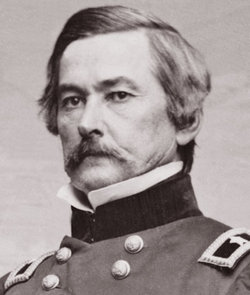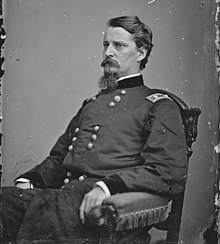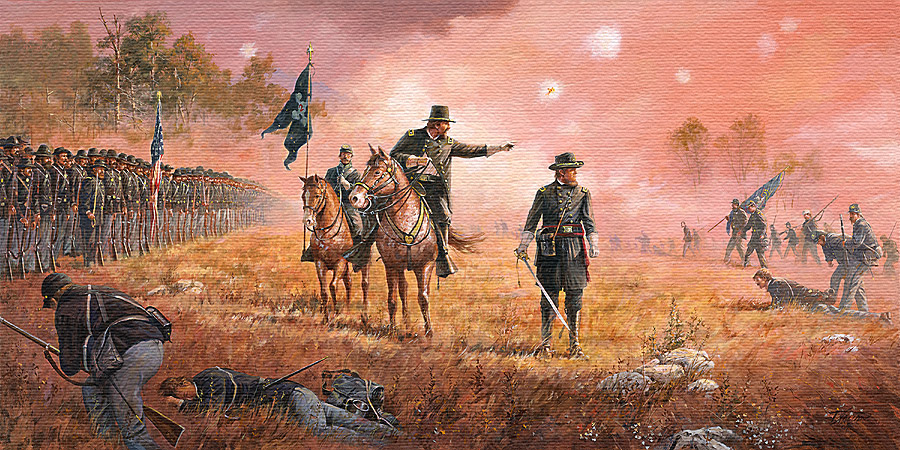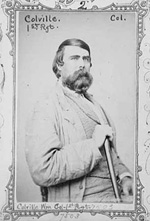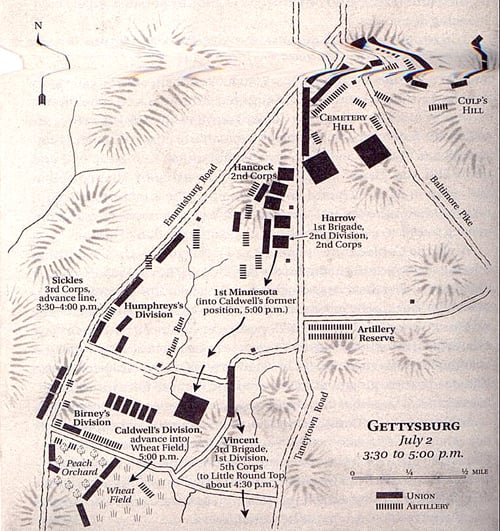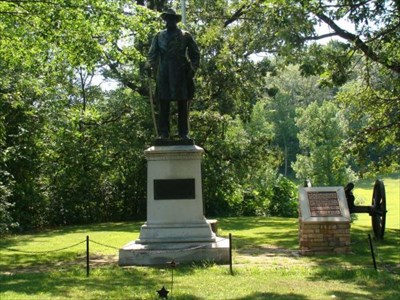
Lincoln, New Mexico Territory

Lincoln, New Mexico Territory
Trouble brewing between the two conflicting factions for years, the Lincoln County War is set off with the assassination of wealthy 24-year-old English rancher, John Henry Tunstall, on February 18, 1878 by a bogus posse of Murphy-Dolan followers (with a warrant from Lincoln County Sheriff William J. Brady to attach Tunstall's cattle and arrest his partner, lawyer Alexander McSween). Match to a powder keg, the 1878 conflict for control of the region that breaks out upon Tunstall's death will include the Blackwater Massacre (3/9) in which a group of Tunstall supporters (including Billy the Kid) calling themselves Regulators kill arrested "House" members William "Buck" Morton (a deputy sheriff believed to be one of Tunstall's killers), Frank Baker (another deputy sheriff, though one that was not on the Tunstall posse ... his and Morton's body will each have eleven bullet wounds ... the exact number of Regulators present after McClosky is subtracted), and William McCloskey (a Regulator and friend of Morton's who is shot for trying to stop the murders, the Regulators' murder of Sheriff Brady and Deputy George W. Hindman (4/1 ... the crime for which Billy the Kid will be sentenced to hang) on the streets of Lincoln, the Battle of Blazer's Mill (4/4) in which a group of Regulators mistakenly take out local rancher Andrew L. "Buckshot" Roberts (he has nothing to do with the Tunstall killing and is actually leaving the area due to the increase in violence), but not before Roberts kills Regulator leader Dick Brewer, and wounds John Middleton, Doc Scurlock, and George Coe (along with knocking Billy the Kid senseless with the butt of his Winchester rifle when he runs out of ammo), a gunfight at the Fritz Ranch (4/29) that results in the death of Regulator Frank McNab (the newly elected leader of the Regulators after the death of Brewer), the wounding of Regulator Ab Saunders (shot in the hip), and the capture of Regulator Frank Coe, the Lincoln town murders (4/30) of "House" gunmen Tom Green, Charles Marshall, Jim Patterson, and John Galvin (no one is ever charged in the deaths) and the killing of "House" gunman, Manuel Segovia (5/15). On July 15, 1878, when armed men from both factions make their way into Lincoln, all the pieces are in place for yet even more murders.
Murphy & Dolan

Tunstall's Death - True West Magazine

Billy The Kid
The Sheriff Brady Ambush - True West Magazine
Buckshot Fights Back - True West Magazine
Tired of living in the hills to avoid being a target in the ongoing war, McSween returns to Lincoln and his store on Monday morning, 7/15/1878 ... with him are numerous Regulators who place themselves strategically about town (about sixty men altogether), barricading themselves into position with sandbags and carving firing holes in adobe walls. Activity noticed, Dolan-Murphy supporter, recently elected Sheriff George Peppin, sends out riders to bring the men he has out searching for Regulators, his "deputies," back to town (mostly gunmen hired from the outlaw gangs of John Kinney, Jesse Evans, and the Seven Rivers Warriors) and positions the gunslingers he has at the west end of town, in the Murphy-Dolan store and inside the Wortley Hotel. Negotiations unsuccessful to bring the situation to a non-violent conclusion (with Lt. Daniel Appel of Fort Stanton the middleman), the two sides begin trading shouted insults and hot lead ... and the first victim of the battle falls, a horse in the Wortley Hotel corral. As the sun sets on the first day of the Battle of Lincoln, over a hundred shots have been exchanged between the two factions and they are not even close to being done with each other.
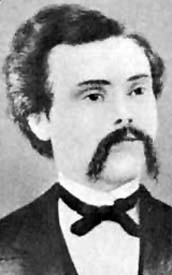
McSween
Peppin
At dawn of the second day of the clash the pot shooting begins again and Peppin sends a message to Fort Stanton that he can end the battle if Lt. Colonel Nathan Dudley will loan him one of the fort's howitzers for the day (figuring the mere threat of the weapon will cause the Regulators to surrender). Still bound by the Posse Comitatus Act that prevented Lt. Appel from getting involved on the first day, Colonel Dudley sends Private Berry Robinson to Lincoln to give the sheriff the bad news, but things change when Robinson reports back to the fort that while passing on the information, the trooper was fired on by Regulators (though historians now believe the gunfire came from Murphy-Dolan followers). Calling a meeting with his officers, it is decided that a ride to Lincoln is warranted for the following day to see exactly what is going on in town. Again as night falls, the sniping and insults end.
Dudley
On the third day of the battle, Wednesday morning, the first human life is lost. Believing a Regulator position in the Montano home has been abandoned, Murphy-Dolan gunmen casually approach the house ... and learn the error of their ways when Fernando Herrera, the father-in-law of Regulators Doc Scurlock and Charlie Bowdrie, and takes out Charlie "Lollycooler" (don't ask, I have no idea!) Crawford with a single round from his Sharps rifle (the bullet goes in one hip and out the other, severing Crawford's spine in the process). Around noon, the contingent from Fort Stanton (two captains, Lt. Appel, and five troopers) arrives to investigate what happened the day before to Private Robinson). A fruitless effort to find the truth, under a flag of truce the Murphy-Dolan men say the Regulators fired on Robinson, and the Regulators say the shots came from the Murphy-Dolan faction ... deciding it must have been the Regulators when the soldiers are fired on as they pluck the mortally wounded Crawford from his exposed position on the hill overlooking the Montano residence (taken to Fort Stanton by the soldiers, Crawford will die later that night). Soldiers gone, the two factions start up again and in the exchanges of lead, Seven Rivers Warrior William Johnson is hit in the neck and has to ride to Fort Staton for treatment, unarmed Regulator supporter Ben Ellis takes a round to the neck while feeding a mule behind his home (where several Regulators are staying, rushing out to grb Ellis, the men wound Seven Rivers Warrior Jim Jones), and Doctor Taylor Early is chased back into the McSween home by gunfire at around midnight when he tries to leave the structure to attend to the wounded Ellis; the only shooting that takes place after the sun disappears.

Downtown Lincoln - True West Magazine
Thursday, the morning of the fourth day of the conflict includes the arrival of three Hispanic women at Fort Stanton (they have walked there from Lincoln), who unsuccessfully beg Colonel Dudley to send help (he refuses to get involved again, only offering help in the form of shelter behind the fort's walls ... by this time, only twelve out of the fifty or so families that call Lincoln home are still in the town), and Doctor Ellis, his wife, and the couple's two infant daughters defiantly walking down Main Street to the Ellis home where the doctor treats the man's neck wound from the previous day (Ellis will survive) before returning to the McSween home. Once returned to the McSween property, the battle begins again and Regulator George Bowers joins the ranks of the wounded when he is hit defending the McSween abode. Not as fortunate is Regulator Tom Cullens who is also at the McSween home, where he is killed by a stray bullet. Around noon, a rumor begins flying about Lincoln that rancher John Chisum is on his way into town to join the McSween side at the head of over thirty of his cowboys and a deadly howitzer. Not taking any chances that the rumor might be true, Dolan and a small group of men leave the fighting and ride off to Fort Stanton, once again asking the colonel privately to intervene in the conflict and end things. And this time after meeting with his officers again, Dudley decides that the next morning a contingent of his men will march to Lincoln "... for the preservation of the lives of women and children ..." still in the town, citizen safety that will come from the soldiers, and the howitzer and Gatling gun the Fort Stanton (the blacksmith of the fort, Mr. Nelson, works through the night to get the howitzer ready for combat).men will march into the battle.

Fort Stanton
The final day of battle begins with the odd sight of the United States mail carrier silently making his rounds through Lincoln. Route completed, the carrier leaves Lincoln at about 10:00 in the morning and the lead exchange begins again ... until Colonel Dudley, a group of his soldiers, and the howitzer and Gatling gun make their appearance on the scene. Stopping at the Wortley Hotel, Dudley advises the Murphy-Dolan faction that he is in town to protect "the women and children" of Lincoln, not join a side in the combat, but that he will turn his guns on anyone that fires at his men ... then the party moves down the street and tells the other gunmen in town the same story, before setting up camp in a vacant lot just across the street from the Montano home. Seemingly neutral, Dudley's arrival in town actually gives the Murphy-Dolan faction a decided advantage ... if they fire on the McSween property, any misses will just fly out of town, while misses from the McSween faction have the very likely prospect of hitting a trooper. Seeing the handwriting on the wall as to what is coming, Regulators start abandoning positions ... positions Sheriff Peppin soon reoccupies with his own men.
At around lunch time, the first request for the surrender of McSween and the men in his home is answered with gunfire (when told there is a warrant for his arrest, Regulator Jim French will yell that he has a warrant to arrest Murphy-Dolan men too ... and states when asked to produce it, "They're in our guns, you cock-sucking sons-of-bitches!").

Final Day At The McSween's
Fleeing the Ellis house when the Gatling gun is turned it's way, a group of Regulators mounts up and flees town, getting into a short gun battle with a small group of Murphy-Dolan men ... in the gunfire that takes place, Murphy-Dolan acolyte John Jones is slightly wounded, and Regulator Dan Dedrick is shot in the arm (Peppin's men also capture for their own use, four pistols, six rifles, twelve saddles, and thirteen horses). With the Regulators that have left due to Colonel Dudley's arrival, the McSween force has been reduced from over 60 men to 15 ... 12 are at the McSween property and 3 are in John Tunstall's old store. As the afternoon begins, armed with new bogus arrest warrants that have been coerced from Squire J. P. Wilson (Peppin threatens to arrest the man), Peppin and his men begin preparations to get the last Regulators by firing the house they are holed up in. Before the house is set on fire though, Susan McSween bravely walks across the street and gives Colonel Dudley an earful of bile (which he colorfully sends back at the woman) about his failure to actually protect any women and children, then she returns to her home. Logs stacked against the outer wall of the east kitchen, wood soaked in coal oil, John Long and a Cowboy known as "The Dummy" set the McSween abode on fire (using two buckets of water, the blaze will be put out by Billy the Kid and Elizabeth Shields; and Regulator gunfire will keep the two firebugs, soon joined by Murphy-Dolan man, Buck Powell, hiding in a disgusting backyard privy hole for the next two hours).

The Murphy-Dolan Mercantile Which Will Become The Lincoln County
Courthouse
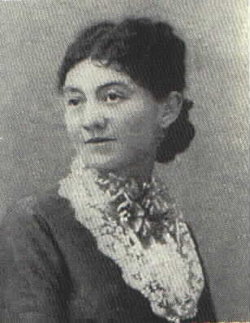
Susan McSween
At around 2:00 in the afternoon, after a band of Regulators (eight men) on a small hill overlooking Lincoln are chased off by the howitzer, Andy Boyle ignites a second log fire in the summer kitchen at end of the west wing of the McSween property. Regulators kept at bay by gunmen shooting at them from a stable behind the house, the fire is soon out of control and slowly spreads from room to room, with the last of the fourteen occupants of the home finally gathering in the only room remaining to them, the east kitchen where the first fire had been set (out with a bang, on the last day of battle, the belligerents fire over 2,000 rounds at each other). It is now 9:00 in the evening and with a depressed McSween giving no directions to the men who have supported him, Billy the Kid takes over (Billy slaps McSween, trying to bring the man out of his darkened state, but the lawyer responds byshaking his head and muttering, "Boys, I have lost my mind!"). Asking for four volunteers, the Kid's plan is for the men (Jim French, Jose Chavez y Chavez, Harvey Morris, and Tom O'Folliard volunteer), along with Billy, to slip out the house and only start shooting back when they are spotted, the signal to the rest of the party to escape while their attackers are preoccupied with Billy. Taking off their boots to make less sound, the first party makes sure their guns are fully loaded as Billy lights a cigar and then places a pistol in each hand as the men move into the McSween backyard ... Morris first, French second, O'Folliard third, Chavez fourth, and Billy bringing up the rear. Unseen, walking slowly, Morris makes it to the backyard gate leading off the property, where the Murphy-Dolan men suddenly come to life as Billy's band of volunteers begins firing back ... Morris is hit in the head by a round that causes instant death, O'Folliard takes a bullet in his shoulder trying to rescue the already dead Morris, Billy shoots John Kinney in the face, knocking the man unconscious. Eventually, the four men make it to the relative safety of the darkness of the riverbank of the nearby Rio Bonito (while this is taking place, Regulators George Coe, Sam Smith, and Henry Brown leave their position in the grain-shed of Tunstall's store, and quietly climb over a high adobe wall using beet bottle perches, and make their way to the river too.).
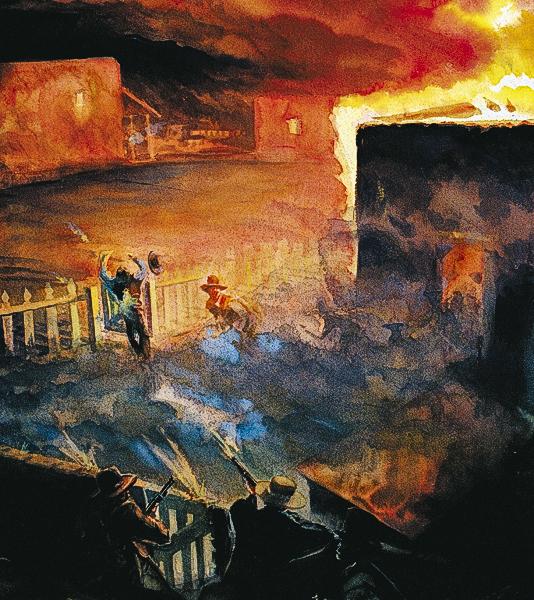
Discovered - True West Magazine
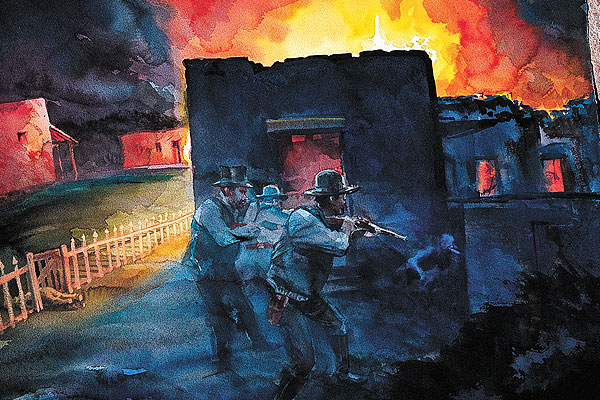
Fighting Back - True West Magazine
Escape
Alerted by the departure of Billy and his confederates, the Murphy-Dolan men open up on McSween's party as soon as the men leave the back door, and the last Regulators are forced to hide in the shadows and smoke of the Mc Seen house burning down. Defending himself with only the Bible he holds in his right hand, someone in the party calls out, "I will surrender." A notification that brings Deputy Sheriff Bob Beckwith forward as he proclaims, "I am a deputy sheriff, and have a warrant for your arrest." A new voice calls out, "I shall never surrender!" and the gunfire at the McSween abode breaks out again, with mortal consequences ... Beckwith is struck in the right wrist and then another round that goes through his right eye and strikes the deputy dead, five bullets hit McSween in the chest and he goes down dead still holding his Bible, Francisco Zamora and Vincente Romero hide in a wooden chicken shed and are both killed when the Murphy-Dolan men turn the structure into a piece of Swiss cheese with their bullets (Zamora is hit eight times and Romero is pierced by three rounds), Ignacio Gonzales is hit in the right arm but manages to make it to the river, and the youngest participant in the fighting, 15-year-old Regulator Yginio Salazar, is knocked unconscious by bullets to his back and shoulder (waking later, Salazar will pretend to be dead until all the Murphy-Dolan men withdraw and start celebrating their victory with lots of booze, tall tales, and the music that two local fiddle players are forced at gunpoint to produce), but manages later in the evening to crawl a half mile to the home of his sister-in-law, Nicolasita Pacheco, where his wounds are treated. Of the second party to leave the remains of the McSween home, only Joe Smith, George Bowers, Florencio Chavez, and Jose Maria Sanchez make it off the property unscathed.
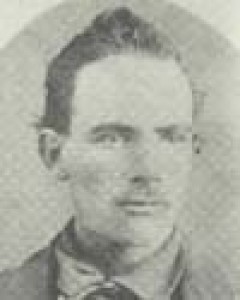
Beckwith
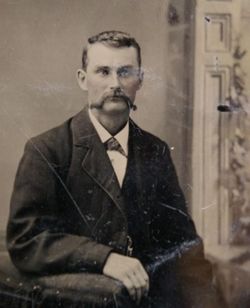
McSween
Salazar
Battle for the town of Lincoln over, so too is the war for the county with neither side really winning (recognizing the lack of law and order in the region, the area will briefly be infested by Texas outlaws) ... combat maybe over, but for many of the belligerents, there will be much more violence. Upset with the performance of Territorial Governor Samuel Beach Axtell during the war, President Rutherford B. Hayes sacks the man and replaces him with Civil War general Lewis Wallace (who is in the process of writing a little piece of historical fiction called Ben-Hur: A Tale of the Christ) and gives him directions to clean up the territory ... and slowly, but surely, civilization comes to the Land of Enchantment. Of the major players in the war, Lawrence Gustave Murphy dies of cancer on his New Mexico ranch outside of Lincoln at the age of 47 in October of 1878, while his partner, 49-year-old James Dolan, dies of alcoholism at the Tunstall Ranch he has pilfered during the war in February of 1898 (their military helper, Dudley, will go on to pursue the Apache renegade, Victorio, put down a rebellion on the Crow Indian reservation, retire from the Army as a brigadier general, and in 1910 atthe age of 84). On the other side, rancher John Chisum dies in December of 1884 at the age of 60 in Eureka Springs, Arkansas from surgical complications from having a growth removed from his jaw. As for the foot soldiers of the conflict, Billy the Kid (after Governor Wallace reneges on his amnesty promise ... outlaw, the Kid will kill two guards escaping from the Lincoln jail), Tom O'Folliard, and Charlie Bowdrie are all killed by Lincoln County Sheriff Patrick Floyd Jarvis Garrett or one of his posses, Regulator Henry Newton Brown will go on to become a Kansas lawman, until he and three cronies rob a bank, are caught, and end up dancing on air for a lynch mob in 1884, Chavez y Chavez wears the hats of both lawman and outlaw too, pardoned from a life sentence behind bars for murder, he dies of natural causes in Milagro, New Mexico in 1924, Doc Scurlock will move to Texas, where he marries and raises a family while serving as the area's post master and writing poetry until he dies in 1929 at the age of 80, Jim French is either killed stealing cattle in 1879, or, spends the rest of his life hiding in South America, or, killed robbing a Catoosa, Oklahoma bank, or, shot robbing a different Oklahoma bank in 1923 (or choose your own fate for Mr. French), after being arrested in Mexico by Texas Rangers, outlaw Jesse Evans is brought back to the United States, escapes from prison, is recaptured and sent to Huntsville Prison, and upon being released in 1882 vanishes from any known historical record, and Yginio Salazr, the youngest warrior, recovers from his wounds, marries, has a daughter, and ranches in the area until his death in 1936 at the age of 72.
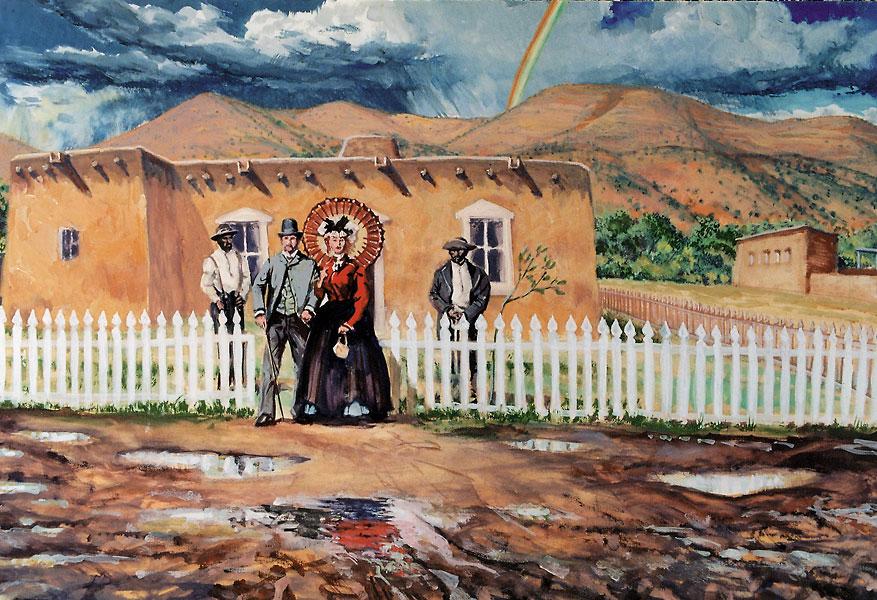
True West Magazine - The McSween's In Front Of Their Lincoln Home
Perhaps the only person to emerge as a "winner" in the Lincoln County War is Susan Hummer McSween (and she comes out of the war a widow), who will be called the "Cattle Queen of New Mexico. Loyalty, fearlessness, and smarts on display during the five-day battle for Lincoln, after the fighting ceases, she hires lawyer Huston Chapman to pursue charges against those she feels are responsible for her husband's death (Chapman will be gunned down in Lincoln by Jesse Evans in February of 1879), though no one will ever be found guilty (at trial, both Dudley and Dolan are acquitted) . Marrying again in 1880 (to lawyer George Barber ... they will later divorce), she manages to pay off the debts of Tunstall and her husband (by selling off her own assets), then start her own ranching operations using the gift of a 40 head herd of cattle from John Chisum (worth about $400). Taking over 1,158 acres of land from the west side of the Mescalero Apache Indian Reservation, her ranch will become the Seven Rivers Cattle Company and her bovine herd will grow to over 8,000 (she will also become known for the fruit orchard she starts with plants obtained from Chisum, the silver mine on her property). Moving to White Oaks, New Mexico in 1902, McSween dies of pneumonia on January 3, 1931 at the age of 85.

McSween At White Oaks
7/15/1878 to 7/19/1878 ... the climatic battle of New Mexico Territory's Lincoln County takes place in the town of Lincoln.

Newly Discovered Billy The Kid Picture - In Striped Sweater Playing Croquet - Estimated Value Of $5,000,000

Newly Discovered Billy The Kid Picture - Playing Cards Are Dick Brewer, Billy The Kid, Fred Brown, And Henry Brown - Estimated Value Of $1,000,000
